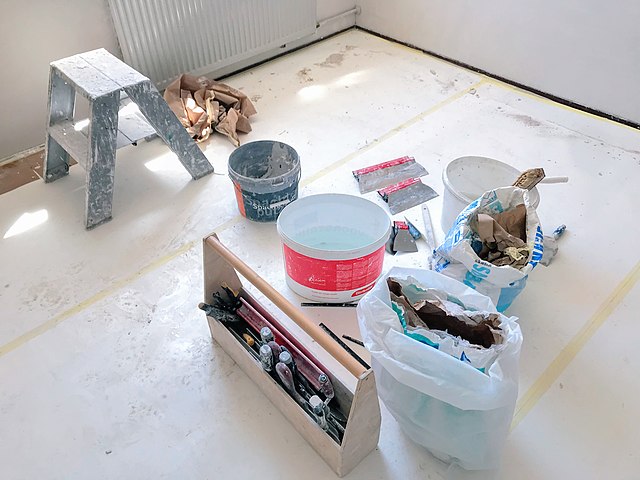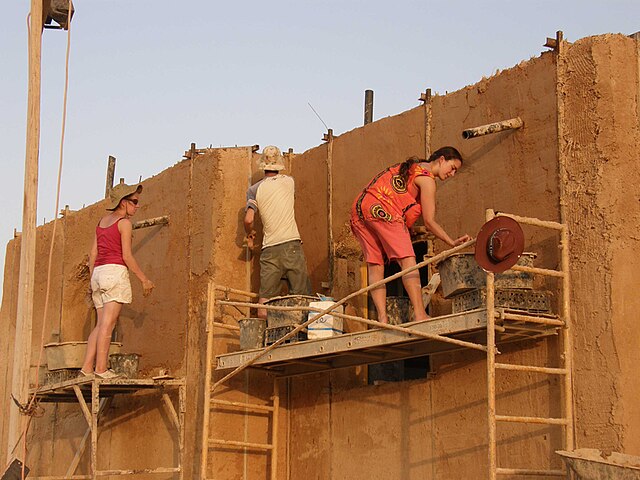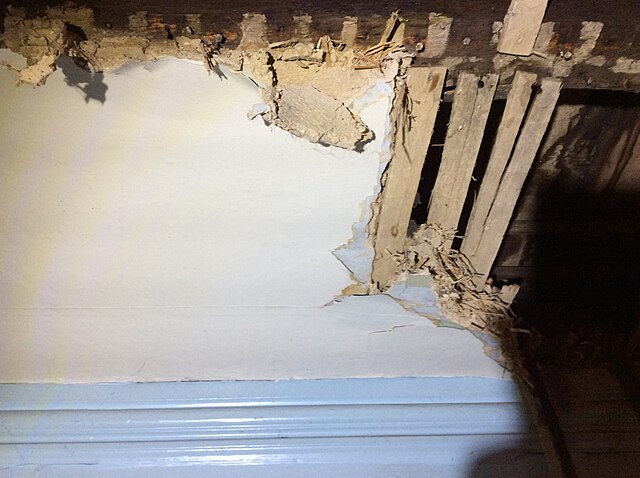Plasterwork is construction or ornamentation done with plaster, such as a layer of plaster on an interior or exterior wall structure, or plaster decorative moldings on ceilings or walls. This is also sometimes called pargeting. The process of creating plasterwork, called plastering or rendering, has been used in building construction for centuries. For the art history of three-dimensional plaster, see stucco.
The tools used to plaster walls
A plasterer covering a wall, using a hawk (in his left hand) and trowel (in his right hand)
Lath seen from the back with brown coat oozing through
Modelled plasterwork ceiling in Chastleton House, England
Plaster is a building material used for the protective or decorative coating of walls and ceilings and for moulding and casting decorative elements. In English, "plaster" usually means a material used for the interiors of buildings, while "render" commonly refers to external applications. The term stucco refers to plasterwork that is worked in some way to produce relief decoration, rather than flat surfaces.
Stucco plaster reliefs, such as this work at the Chateau de Fontainebleau, were hugely influential in Northern Mannerism. A plaster low-relief decorative frieze is above it.
Applying mud plaster to an outside wall
Clay plaster base coat on split oak lath held in place with straw and manure, covered with a lime plaster top coat, Old Economy Village, Pennsylvania (1827)
Lime setting-coat on clay plaster with straw binder. Applied to hand-split lath over a timber framed wall of a brick family house at Old Economy Village, Pennsylvania








